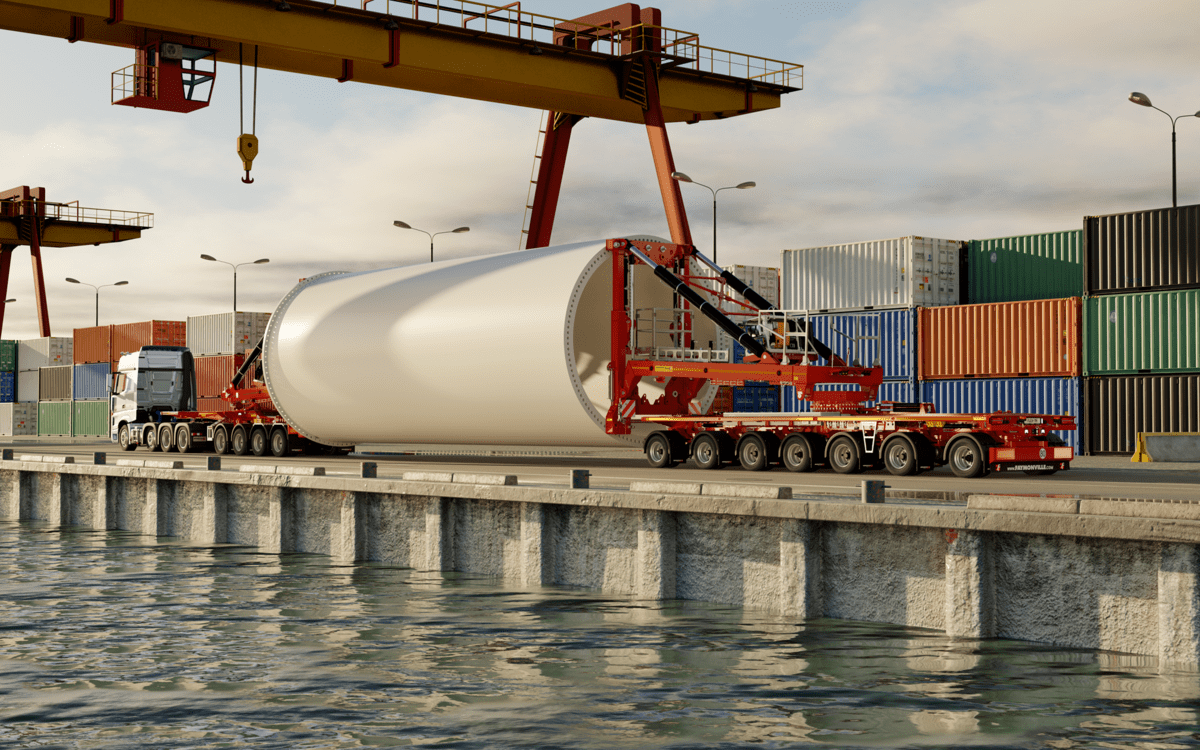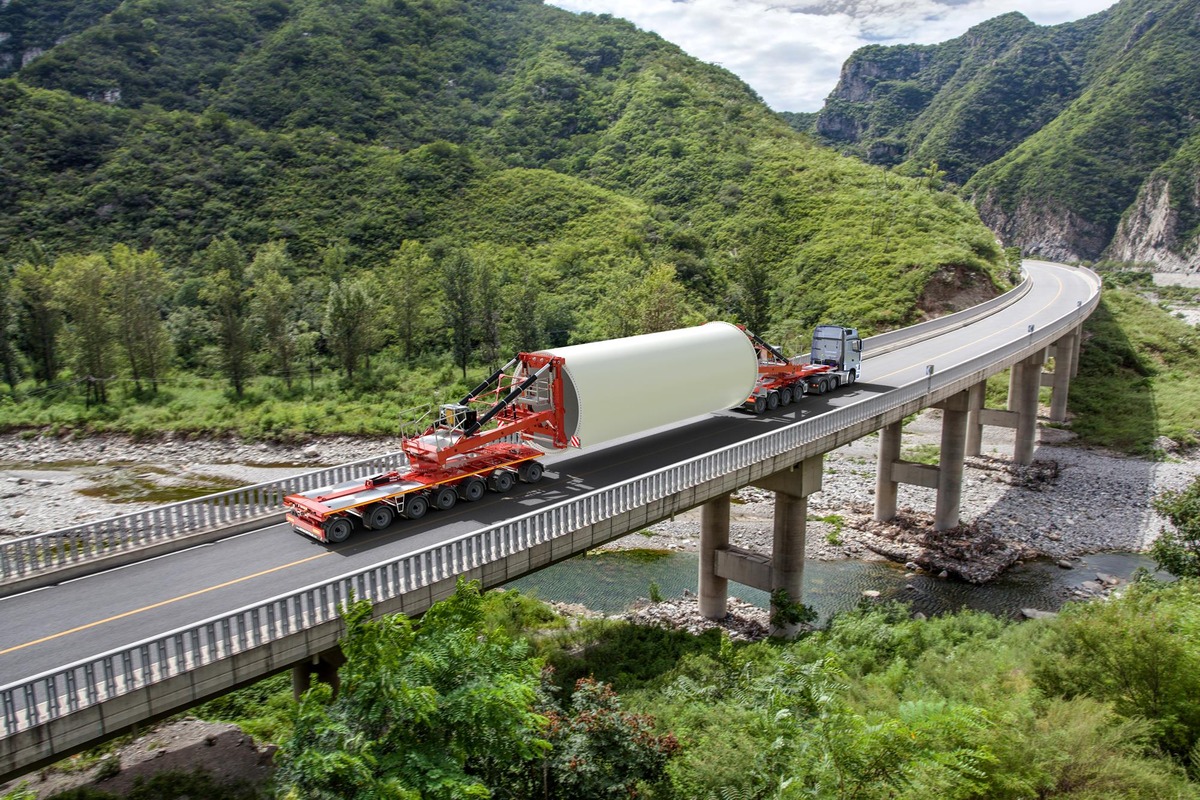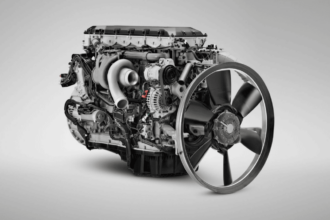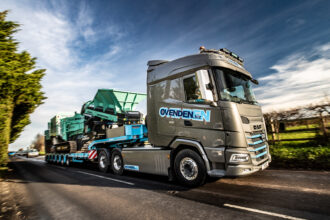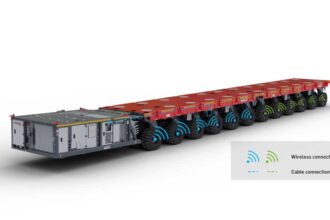Faymonville Introduce New Wind Tower Adapter with Rotation Device
FAYMONVILLE INTRODUCE A NEW WIND TOWER ADAPTER WITH FREE ROTATION DEVICE, MOUNTED ON A 4+7 DOLLY TRAILER TO FILL THE LAST GAP IN THEIR RANGE.
The components of wind power plants demand different transport solutions, depending on the route. Sometimes a classic low-bed or a semi low loader is sufficient, but sometimes the requirement is far more complicated. Faymonville’s new wind tower adapter, mounted on a 4+7 dolly trailer, fills the last gap in the Faymonville range.
Such an imposing combination is used when tower segments up to a payload of 100 tonnes must be transported on winding roads. The vehicle is based at the front on a 4-axle dolly with air suspension – optionally with 17.5” or 22.5” tyres – which can be configured for 6×4 and 8×4 or 8×4 and 10×4 tractor units. “For the first time ever, 10×4 machines can take on such missions. The different base variants and the tyre options make the concept extremely interesting for the user”, says Product Manager Rainer Noe, explaining the flexible approach.
For towers with internal or external flange, the two installed tower adapters facilitate connection to the tower segments in 3-point or 4-point clamps without an additional frame. In the basic version, the components are conceived for internal diameters from 2,650 to 5,400 millimetres. “And an extension to 6,300 millimetres is available if even larger tower segments need to be moved”, says Rainer Noe, describing the solution for possible XXL versions. The two adapters are designed for maximum flexibility, as segments with an external flange can also be accommodated. Even the transport of various machine houses is possible with this system. The vertical stroke of 1,600 millimetres facilitates passing over high obstacles along the route, such as roundabouts, crash barriers or road boundaries.
The 7-axle self-steering trailer is now setting new standards in road safety. “We are the only supplier on the market with a hydraulic suspension. This principle is used to raise or lower the self-steering trailer on one side, thereby increasing the stability of the convoy considerably in critical passages”, says Rainer Noe, describing the technology employed. “The steering system has four steering cylinders for the front steering and four for the rear steering. For further optimisation of the safety aspect, the vehicle width is set to 2,750 millimetres.” Hydraulic and mechanical locking systems prevent inadvertent lowering or retraction of the adapter. The general handling is intuitive and simple. When handling the adapter, the user is always in a safe area due to the standard remote controls and has a perfect overview when loading and unloading.

